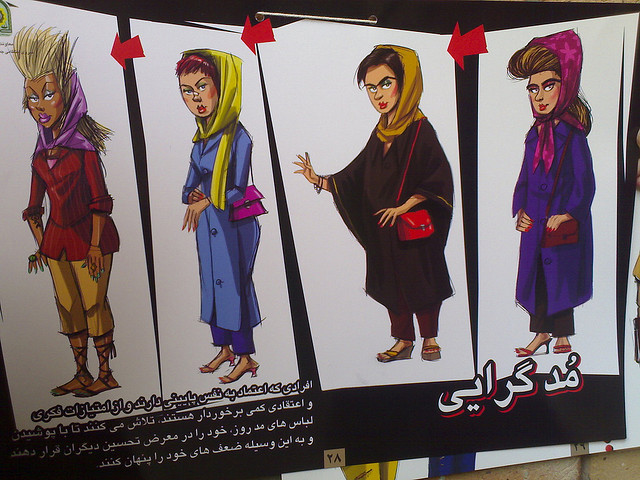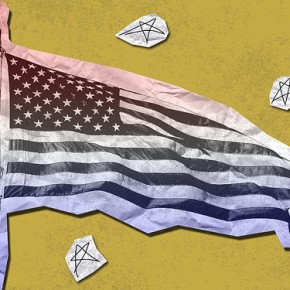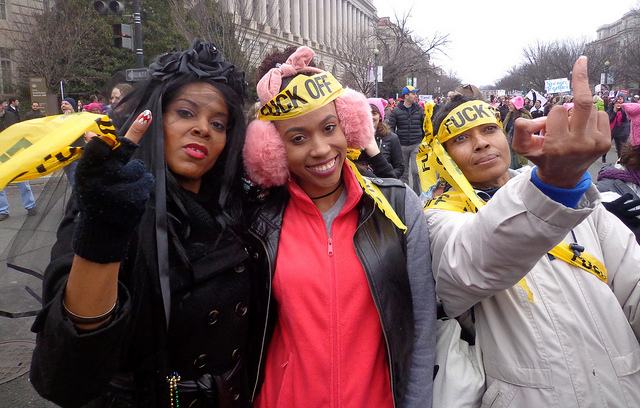The term ratchet, which comes to us from African-American Vernacular English, is obviously derogatory. It’s several kinds of derogatory though: being called a ratchet is an insult to class, status, and racial standing. The word is an indictment of the coarseness that supposedly defines plebeiean femininity in America.
Ratchets are alleged to be “ghetto queens” who think too highly of themselves, plot their way to the top by sexual conquest, and favor short dresses, large earrings, and way too much makeup. As a respectable woman, you’re not supposed to be a ratchet. You’re supposed to be graceful and successful in a non-threatening way.
Terms like this allow people to laugh off occasionally displaying such traits by saying that they were “acting ratchet.” These behaviors become a short-term mask that is a temporary regression into something more ethnic and/or “lower-class,” rather than contituting something being actively repressed. It isn’t just ratchets: similar trends happen in regards to constructs like the Latina Chonga, the Mizrahi Freha, and if we reevaluate the racial component of superiority, the British Chavette.
This may not seem important to Liberation Islam. However, professionally-classed Muslim immigrants frequently define Islamic femininity in opposition to secular archetypes of “loose women.” The worst crime for a Muslim girl raised in a conservative household is to stumble into the territory of “being Western,” which is better termed, “questioning the status-quo.” Since models like the ratchet have been globalized through media, this behavior is also seen in Muslim countries themselves. Right-wing Pakistanis start opposing the “modern” as something that will transform Muslim women into Snooki (who is termed a guidette) from the reality show Jersey Shore.
These two trends have nurtured two different Muslim femininities. One is more secular and Western, and tolerates figures like Snooki as something you can laugh off as a cautionary tale, but avoids moralist criticism out of fear of not being considered modern enough. For these people, the superiority is mostly just snobbery.
Another responds with right-wing Islamism. These Islamists are trained to be extremely defensive at the dishonor of either being like Snooki if they’re women, or having a female relative like her if they’re men. Neither strategy is particularly healthy, and both camps end up alienated for their own reasons.
Serious explorations of Islam and gender have to fundamentally realign this discourse. Gender is an expression of individual sexuality, and singular expressions are never superior to other ones. They are simply that: individual expressions that occurs in a society which should allow for sexual authenticity whenever possible.

This is part of the reason that I find it irritating to debate the practice of veiling within the tradition of European leftism. These discussions are fashionable and usually get lost in elitist discussions of how Islam can reconcile itself with European modernity.
These are things that are best discussed in a French bakery overlooking the Eiffel Tower. It doesn’t matter if someone veils or not. Veiling is as much an expression of personal sexuality as being a ratchet. Whether or not someone decides that it works for them is really no one’s business.
The real point is that forms of sexual expression, like veiling, being a ratchet, or the act of avoiding being a ratchet, should be resisted when they slip into authoritarianism. This can be tricky. Many forms of sexual expression superficially feel like a choice. However, the acceptable forms of gender are set by wider limitations that only become apparent with closer investigation. Gender roles are frequently dictated by hierarchy: this is what a Muslim woman should be, this is what a Muslim man should be, and so on.
Islam functions best when it is fundamentally opposed to domination, using the tawheed to imply a oneness of humanity that does not allow for structural oppression. It should only follow that considerations of gender which are absorbed through hierarchical domination should be opposed as well.
This is in opposition to a great deal of what is considered traditional about Islam and gender. However, reevaluating things are a major fixture of renewing our understanding about the religion. This especially necessary when we remember that many of our about gender binaries and sexual orientation are actually very new.
They arose through the Industrial Revolution and its wider cultural effects during the 19th century (which, readers will recall, is the same time as modern Salafism‘s genesis.) These social transformations were then defined rather positively against organized religion. The engine for this was a secular tradition that frames religious considerations of gender as fiery moralism that must be extinguished by European-style areligiosity.
However, in secular societies, commerce quickly replaces traditional religion, and the type of gender that is gleaned from advertising can be just as damaging as narrow-minded readings of the Quran.
The role of Liberation Islam is to bolster an understanding that neither traditional secularism, nor right-wing Islamism, have the answers that can lead to a liberated expression of sexuality. They simply compel a person to reproduce different standards of gender and sexuality, which only align with people if they are lucky.
They also contain a compulsive need to legitimize themselves by lashing out violently against other forms of sexuality, which requires quite a bit of misery to sustain as a status quo. One is forced to hate certain forms of expression for not being religious enough, or secular enough, and others for not being high-class enough, yet others for being too high-class, and so on.
Our goal should be altogether different: an Islam that allows for veiling and ratchets without holding either party in contempt. Otherwise, Muslim considerations of gender will continue be defined by false binaries that fail to capture the depth and complexity of human sexuality.
Photographs courtesy of Hessam Saravi and Mahdi Ayat. Published under a Creative Commons License.





